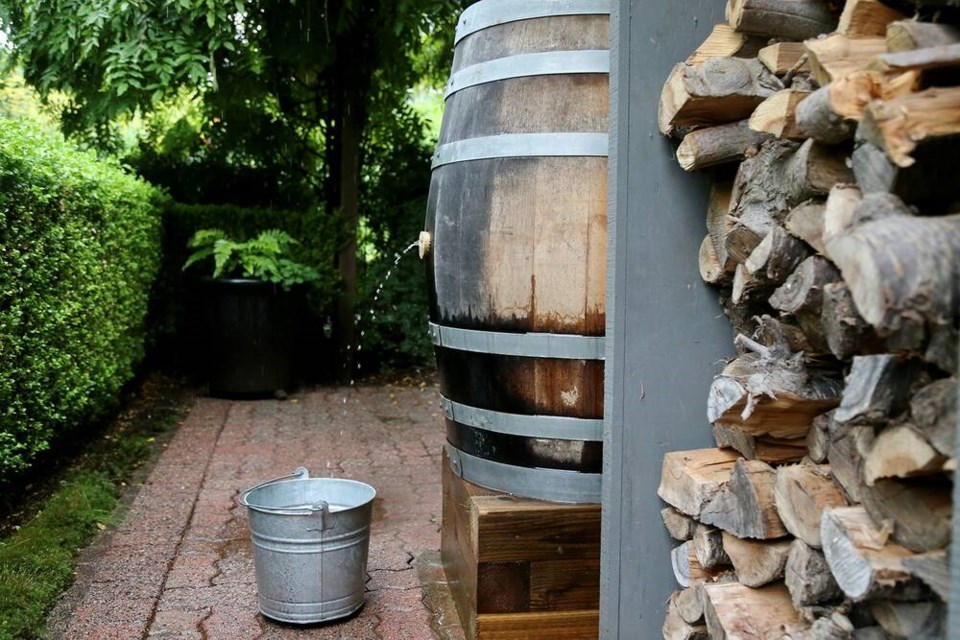“The breeze at dawn has secrets to tell you. Don’t go back to sleep”, advised the 13th-century Persian poet Rumi. Gardens especially, are seductive at dawn, when birdsong awakens the trees and the air is cool, heavy and still.
Without question this is my favourite time of day, and almost without exception I am walking the garden, steaming cup in hand, observing and listening. Inevitably, something or someone needs attention or a rescue, and almost always there is time.
Time before the sun takes its toll, and the noise and busyness of the day distract me from peace. This past week, after atmospheric river rain, the morning garden had many new secrets to share.
Dozens of spiders swollen with eggs had spun dewy webs across the footpaths, telling me that neighborhood children would soon be returning to school, and reminding me to plant winter greens and start harvesting near-ripe fruit before the bears come calling.
Tiny holes in the cork of the rain barrel told me that native carpenter bees had set up house near the mason bees. The water spouts shooting out the sides of the barrel confirmed that ecosystem services are hospitable for yet another species of super-pollinator.
A large patch of creeping thyme, plugs recently planted as part of an overall plan to replace the last patch of grass in the back yard, was suddenly dotted with hundreds of baby plants self-seeded from elsewhere in the garden – yarrow and selfheal, wild strawberry, plantain, nodding onion and thistle.
There was time to pluck them quickly while the soil was sodden and their roots were shallow. I committed to memory that these plants might thrive together in part-sun and sandy soil.
A tiny Anna’s hummingbird had somehow found his way into a covered hurricane lantern planted among some littleneck sage. His mate buzzed my head like a miniature harrier aircraft, until I followed her lead and rescued the terrified creature. I know now just how clever and trusting hummingbirds can be. I know too, to move the lanterns out of the pollinator garden.
The unseasonably heavy rain had taken a toll on many vegetables that traditionally hold their own weight in our gardens. Dwarf bush beans, Brussels sprouts, chickpeas and perennial fennel caved under the weight of too much water falling fast.
By the time I’d recovered and staked so many plants in a wet garden, I was well and truly soaked. Next year I will stake them at the outset. Lesson learned.
On this particular day, a trio of adolescent barred owls were actively hunting when I began my morning walk-about. I’ve only ever seen night raptors after sunset when they navigate the confers circling our property, searching for mice and small birds. I thought perhaps the deluge had sent owl prey into hiding, but I’ve since learned that rodent burrows are often flooded by heavy rain.
I am awestruck by the miracles of nature and how perfectly the relative proportion and health of producers, consumers and decomposers within an ecosystem anywhere in the world, can create and maintain balance. I am learning too how easily we can upset this balance, and at what cost.
There is little I can do to offset a potential trophic cascade produced by last week’s heavy rains, but I can continue to reduce my carbon footprint and share what I learn about growing food and native habitat in a changing climate.
I can continue to get up early and walk – in our gardens, on the seawall, and in the woods – and listen closely to secrets on the breeze.
Laura Marie Neubert is a West Vancouver-based urban permaculture designer. Follow her on Instagram @upfrontandbeautiful, learn more about permaculture by visiting her Upfront & Beautiful website or email your questions to her here.
For a taste of permaculture, watch the video below:




